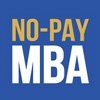One of the courses I’m taking this semester is An Introduction to Corporate Finance, taught by Aswath Damodaran, of NYU’s Stern School of Management. Even the title of the course requires some decoding if you haven’t studied business before. What exactly does one study in a class on corporate finance?Let’s start with the word “corporate.” In this course we are looking at large, publicly-traded corporations, i.e. firms that are owned by shareholders. “Finance” refers to decision-making that involves money. Corporate finance, then, is financial decision-making for publicly-traded companies. A foundational principle of corporate finance is that the main purpose of the corporation is to maximize shareholder wealth (more on that in a moment).
The course walks through the decision-making process for corporations using the concept of hurdle rates. Basically, any time there is a financial decision to be made – acquisition of another company, selling off a part of the company, investing in a new business line, expanding an existing business line, etc. – it is necessary to demonstrate that the proposed action comes with a reward that outweighs the risk (the hurdle rate), thereby leading to greater wealth for shareholders.
I’m loving using this style of thinking, and I’m learning a lot of new terminology. For example, calculating a firm’s cost of equity involves using a coefficient called beta that measures how closely share price has historically mimicked the movement of the overall market.
However, I’m finding that in order to come up with numbers for anything involving a mechanism as complicated as the market requires a lot of simplification. Almost every number that is used to calculate a hurdle rate is at best a good estimate. The coefficient beta is calculated using the historical relationship between share prices and market fluctuations, but there is no guarantee that the relationship will be the same in the future.
Furthermore, even the guiding principle of increasing shareholder wealth is a drastic simplification. For another course, I’m reading a book called Conscious Capitalism. The author of that book, who is the founder of Whole Foods, says that much of the current public mistrust of capitalism stems from the idea that businesses are only out to make money, when in fact a good business should generate value not just for shareholders but also for its customers, its employees, its community, and society at large. But how do you measure that value? It is easy to calculate changes in share price, but how do you measure whether a community has benefited from the operations of a particular business? And even if you could determine that a business had had a positive effect, how would you calculate the size of that effect? A finance person would say that anything besides shareholder wealth is just noise; the only appropriate focus in corporate finance is maximizing shareholder wealth, nothing more and nothing less. But I’m not convinced.
Nonetheless, I highly recommend the course; Professor Damodaran is a great lecturer – engaging, funny and incredibly knowledgeable. His course provides an approachable introduction to a topic that is intimidating to many people without a business background. And the concepts introduced in the class and the method for working through calculating a hurdle rate are an important foundation. Although I’m not planning to become a CFO, I’ve found this class enormously helpful in understanding the finance mindset.



